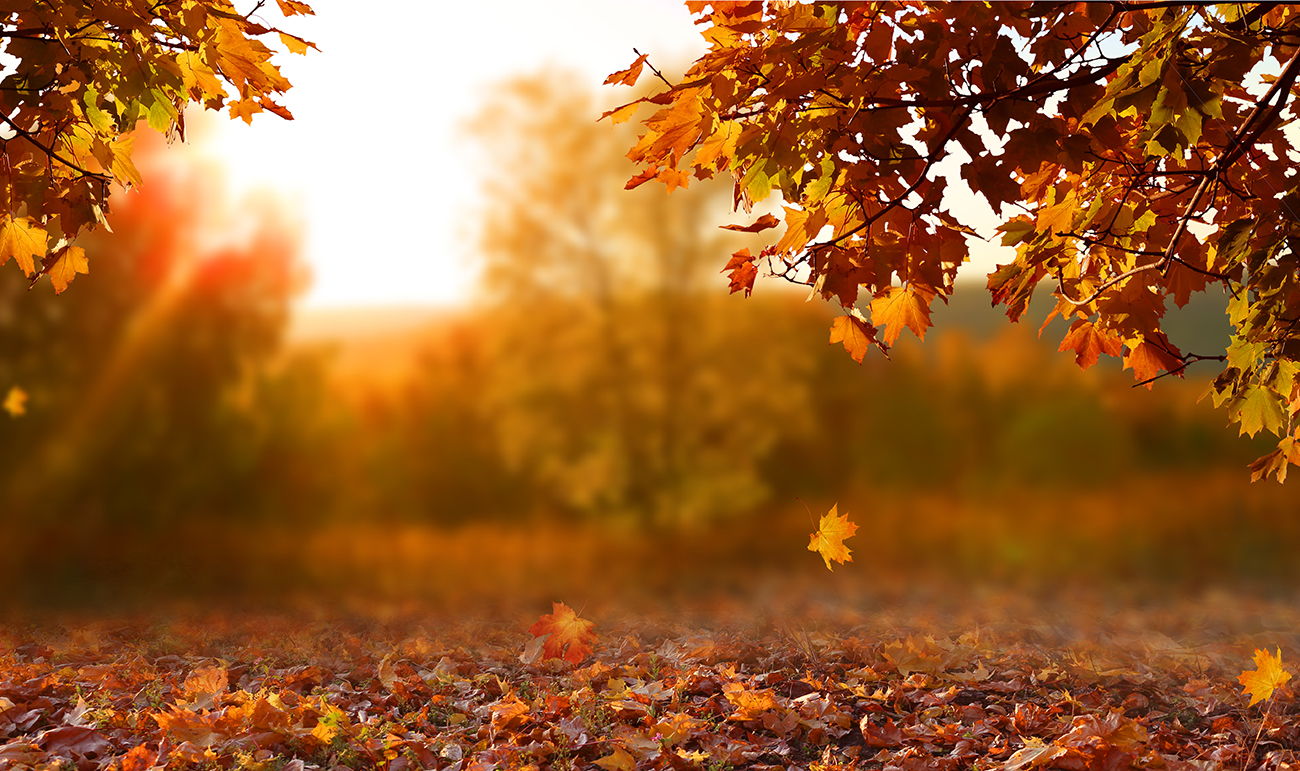
Fall Leaves? Leave 'Em
October 16th, 2019
As the seasons turn and the leaves begin to change colors, the majority of homeowners prepare for their annual removal of leaves from their yards. But, what if we told you that you could avoid all of that hard work bagging leaves and benefit the environment at the same time? That’s right! Leave the leaves on your property to protect wildlife habitats and provide your lawn and garden beds with natural fertilizer. We’ll share ways you can put fallen leaves to good use on your property just as the tree intended for them because in nature there is no such thing as waste.
Supporting Wildlife
Leaf litter - the only kind of litter we love - serves many important roles as a food source, nesting material, and winter habitat for a variety of wildlife. Some wildlife rely on the leaf layer for cover and warmth throughout the cold months, whether they live above ground or in the soil below. Many moth and butterfly species use fallen leaves as a habitat to lay their eggs in or overwinter as caterpillars. When they emerge in the spring they provide many benefits to the surrounding ecosystem, from being an important food source for birds to pollinating your food in the garden. Raking up your leaves and sending them away removes protection for many critters and eliminates important species that have used the leaves as an overwintering refuge.
Nature’s Fertilizer
Fallen leaves are an excellent source of mulch that suppresses weeds and insulates tender plants as well as the soil below. Leaves are also a great source of fertilizer as they release nutrients when they break down. The insulation and nutrients will make for richer and more biologically active soils come spring time. Leaves are also useful in compost piles as a source of carbon to balance out nitrogen (food scraps and grass clippings are examples of material that are high in nitrogen).
Use Fall Leaves
You can use fall leaves in a number of ways to reap their many benefits
-
Spread leaves over your garden bed. To preserve the potential wildlife that is within them use a rake to move them instead of a leaf blower. Rakes are much gentler. Plus, they don’t emit any greenhouse gases when you use them and you’ll get more exercise - a win for both your health and the environment’s!
-
Mulch the leaves on your lawn by mowing over them. Shredding up the leaves with a mower is a great way to reduce their volume and prevent grass from being smothered while at the same time providing your lawn with nutrients from the leaves as they break down.
-
Add your leaves to your backyard compost pile. You can shred them up with a lawn mower before putting them in to increase the surface area for microbes to munch on, which will accelerate your compost making process.
-
Make leaf mold for garden soil. Leaf mold is the result of piles or bags of leaves that have sat and began to decompose over a period of time. Leaf mold can improve the water retention and overall structure of soil. More details and information about how to make leaf mold can be found here.
If you have more leaves than you can find a place to use on your property and don’t want to store any for use in the spring there are a few more things you can do!
-
Share your leaves with others who have garden beds - reach out to your neighbors, a local school with a garden, or a nearby community garden.
-
If you live in the City of Ann Arbor, yard waste is collected curbside seasonally by the City of Ann Arbor. For more information about the curbside compost pick-up service in the City of Ann Arbor please visit a2gov.org/compost.
-
If you do not live in the City of Ann Arbor, check with your local municipality to see if they offer any residential leaf pick up services and/or add compost to your waste hauling services if that is an option.
-
Drop off yard waste at our Drop-Off Station so that they can be properly composted. Leaves and other yard trimmings that are sent to landfills are trapped without airflow leading them to rot and emit methane, a greenhouse gas, in the process.
So do the outdoor winter residents, your plants, and yourself a favor this year and leave the leaves! Enjoy the fall colors and the knowledge of the dynamic ecosystem at play often unseen within and below the leaves.